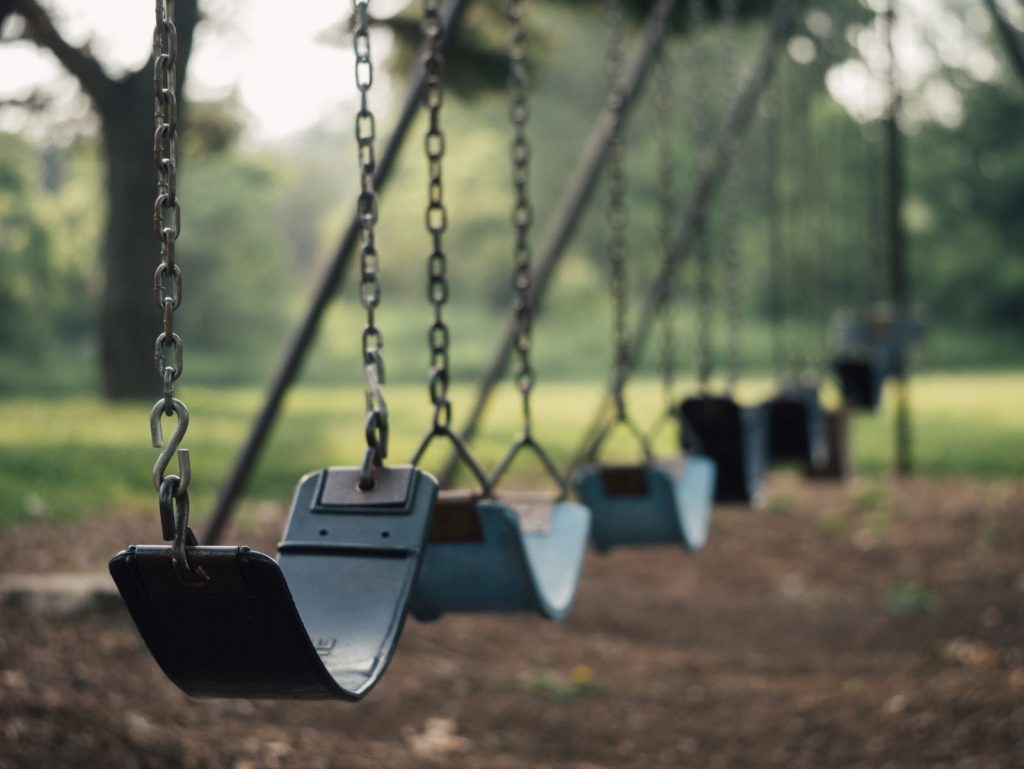
Creating a playground for children is an exercise in possibility: what will give children the most play opportunities? There are plenty of playground components that have been introduced and summarily retired throughout the decades. See-saws were once a staple of a good playground, but after criticisms that they weren’t safe for younger children, it’s hard to find any still in operation. Merry-go-rounds met a similar fate, with many being retired in favour of safer alternatives.
Today, children are safer than ever before at their neighbourhood playgrounds, but if you’re building one from scratch, you may still be anxious that an exuberant game of tag will end in a trip to the doctor. Posting safety guidelines at your playground can help remind parents (and children, by extension) about how to play safely. Let’s take a look at some basic, no-nonsense safety rules for the most common pieces of outdoor playground components.
Swing Sets
Few playgrounds exclude swing sets, and for good reason. They appeal to children of all ages, and the soaring heights you can reach present a fun, risky challenge for visitors. However, they’re also a hotspot for injuries, especially if the ground covering fails to provide a soft landing. Reminding children of these rules before they ever sit on a swing can help them use the equipment responsibly and safely, allowing everyone to have a good time.
- Children who are three years of age or younger should use a swing with a “bucket” seat, where the sides are enclosed to prevent accidentally falling off.
- Parents and guardians should monitor their child’s play while on the swing set. This allows them to step in quickly if required.
- Rough play, such as swinging side-to-side to try and bump the child on the neighboring swing set, should not be allowed. This places stress on the equipment and, since it’s not being used as it was designed, makes it harder to anticipate and prevent injury.
Plastic Playground Slides
Plastic slides are usually the star attraction of the playground, and for this reason, there’s usually a squabble or two over who will get to slide down first. While plastic slides are far safer than their metal cousins, it is still possible for children to injure themselves or each other if the slide is used incorrectly.
- Children should always slide down feet-first in a sitting position. Sliding head-first or lying flat on the back or stomach makes it much harder to exit the slide safely.
- Parents should not go down the slide with their child on their lap. This may seem like a harmless way to share the experience, but studies show that this actually places the child in greater danger of breaking a leg as their foot is caught or twisted on the way down the slide.
- Only one child should use the slide at a time (unless the slide is specially designed to accommodate two or more riders), and children should wait until the exit of the slide is clear before sliding down.
- Plastic does heat up in the sun, so before sliding down, parents should check to make sure that the surface is cool enough that it will not cause accidental burns.
Climbers
Plastic playground climbers are a fun way to get from one point to another, or to practice coordination. They may be free-standing, or they may function as a part of the larger playground structure. They’re renowned for helping children develop physical strength and personal confidence, but as with any form of playground component, there are rules that should be followed if they are to be used safely.
- If the equipment is wet (for example, after a rainstorm or coated in morning dew), children should avoid using it. Wet plastic is extremely slippery, and the design of a climber means that a slip puts the child at risk of stretched or torn muscles.
- Unless the climber is designed for two or more children, only one child should use it at a time.
- Parents should always supervise their children, especially if the child has never been on a climber before and may still be figuring out how to safely traverse it.
Safe Enjoyment of Playground Components
Making a playground for children is an exhilarating endeavour, and with the proper safety precautions, your guests will enjoy hours and hours of formative, developmental playtime. If you’re still looking for the right playground components to complete your playground design, take a look at our online product catalogue. SPI Plastics supplies pre-made and custom-designed playground equipment to play areas around the world, although we proudly design and produce our pieces right here in Canada.
If you’d like to learn more about our line of plastic playground components, call our office at (519) 935-2211 or contact us online.